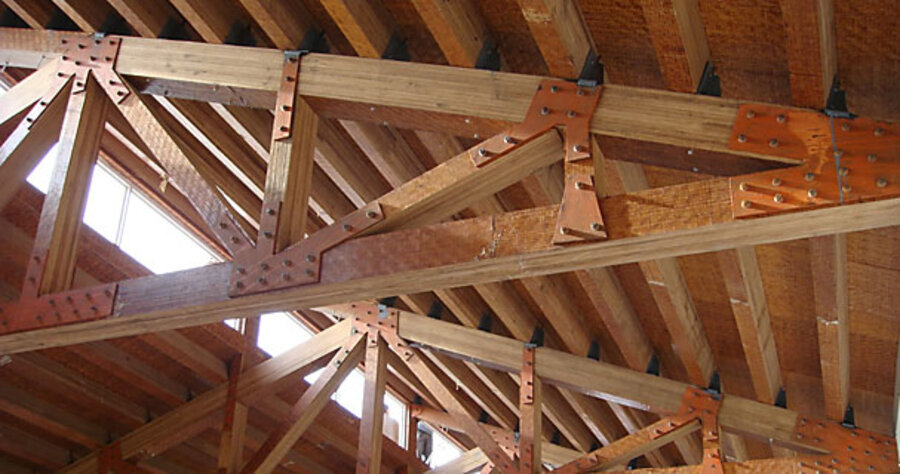Group sends bamboo homes to China’s quake zone
Loading...
| Beijing
As quake survivors take refuge in tarp tents across Sichuan Province, a Beijing-based nongovernmental organization is pushing a home-grown, quake-resistant housing solution: bamboo.
Though generally dismissed as “poor people’s timber” in the developing world, which favors “more modern” materials like steel and concrete, bamboo is more flexible for withstanding tremors and is widely grown in parts of southern China.
So, the organization – the International Network for Bamboo and Rattan (INBAR) – hopes that rebuilding in China’s disaster area presents just the chance to revive this inexpensive, environmentally friendly, quake-resistant native material.
“So far, massive construction or reconstruction means concrete structures in China, and bamboo is little known for this [building on a large scale],” says Shayam Paudel, INBAR’s director of bamboo housing programs. “In China, bamboo is still not accepted as modern building material.”
But Mr. Paudel expects new technology that allows quick construction and makes a bamboo dwelling look modern may persuade the region to give it a try.
Even builders of sophisticated structures see bamboo’s potential in rebuilding the quake-stricken regions.
“Bamboo can be a modern material. The key issue is how the bamboo pieces are put together to make a structure stable,” says Goman Ho, director of the Beijing office of Arup, an international engineering consultancy. Mr. Ho’s firm oversaw the construction of Beijing’s Olympic Stadium, the Bird’s Nest.
But the bamboo house is a far simpler structure.
Its walls are made up of compressed bamboo panels supported by a steel frame and bamboo columns. Fitted with pitched roofs and glass windows, it looks like a modern home.
A processed bamboo panel is just like any wooden panel, except that it is a sandwich of plywood and insulation layers. The only visible difference is that, instead of a concrete or brick facade, the house’s exterior has a pattern similar to a bamboo mat.
A week before the quake struck on May 12, INBAR had erected several prototype homes in Beijing in a demonstration project funded by a US-based foundation. These model units will be replicated to provide shelter for the quake’s homeless.
Last week, INBAR received its first grant of $150,000 to build at least 50 bamboo houses in the earthquake zone as emergency shelters and even longer-term housing units.
Although building mass housing with bamboo has been one of the major missions of the group since its creation in Beijing in 1997, the technology that INBAR uses to produce standardized bamboo panels wasn’t available until two or three years ago.
INBAR’S construction method requires processing bamboo into building panels, which allows for efficient mass manufacturing and off-site prefabrication.
While much of modern-day building in China is done with steel and concrete, ancient Chinese intellectuals preferred living in retreats made of bamboo, a plant whose qualities were often likened to the character of an honorable man.
In Yunnan Province, which borders Sichuan, the Dai minority still lives in bamboo homes. And in affluent Zhejiang Province, where bamboo is plentiful, local officials have been encouraging architects to design recreational infrastructure using bamboo.
Building experts in China who have been testing bamboo give it the seal of approval for building in the seismic zone.
“Bamboo can be an excellent engineering material. The technology is mature. We believe the bamboo and plywood with a steel frame should be good for earthquakes,” says Chen Xu He, formerly a Chinese Academy of Forestry researcher, who tested the bamboo panels used in the INBAR models.
More rudimentary bamboo houses have withstood serious earthquakes. For instance, many concrete structures crumbled in a 1991 Costa Rica earthquake that registered 7.7 on the Richter scale, but the 20 or so bamboo houses nearby remained standing and undamaged.
Bamboo also grows quickly, so it can be supplied relatively quickly, says Ho, of Arup. The plant has a much shorter growing cycle, typically of one to three years, than timber, which takes five to 10 years to mature, he says.





